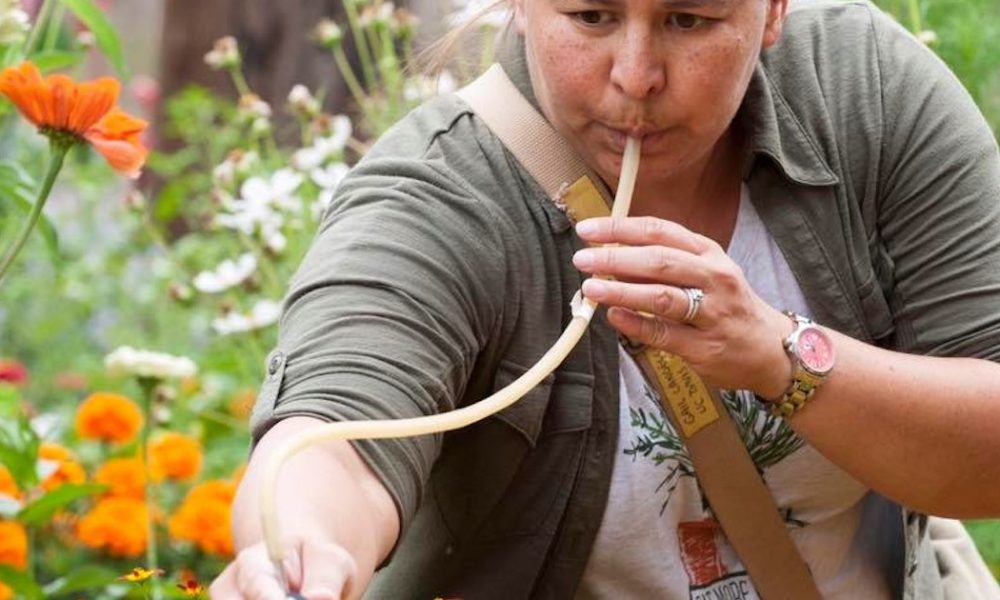
As a child growing up in Baltimore, Md., Gail Langellotto always was interested in science. When she took a part-time job in undergrad with an entomologist, her love for insects was sparked. She liked that insects offered her an opportunity to study science outside, and due to demand in the field, she began to study insect pests.
Now, a professor of horticulture at Oregon State University and the state coordinator at the OSU Extension Master Gardener Program, Langellotto helps horticulturists manage their pests with the ideology of integrated pest management.
”Integrated pest management is the idea that there are multiple approaches to control pests,” she said. ”Don’t just use chemical controls as your only tools.”
She explained that during the Green Revolution in the 1950s, the chemical controls would be cheaper and more commonly used. She said the goal now, instead of blanket spraying on regular calendar days, is to monitor pests to see when spraying is needed.
”Take time to identify what the pest is, so you can choose the best tool to combat that pest,” she said. ”Consider all options.”
She said beyond chemical sprays, there are natural, biological controls or horticultural practices that can help keep pests at bay.
”Don’t base your entire pest control program on pesticides,” she advised.
There are multiple benefits of integrated pest management, Langellotto said. By limiting the use of pesticides, and choosing an appropriate pesticide for the pest, it delays pests from developing a resistance to the pesticide. Another concern is that pesticides might kill insects that horticulturists weren’t intending on targeting.
”It’s hard to match the marketing message they might see on a label,” she said. ”Some products may say on the label, ‘Kills 100 different insects on contact.’ You might think that message is great, ‘It’s going to kill everything I want to kill!’ But it could harm bees or butterflies that you don’t want to harm, and maybe it’s not the best choice.”
She added that it takes time to learn how to apply targeted controls to specific pests.
Langellotto also offers courses in pesticide safety, because along with protecting harmless insects, there is also the concern for other innocent parties.
”We want to make sure that people use tools responsibly so they’re not going to harm themselves, neighbors, pets and family members,” she said. ”Understanding that herbicide products, if used on a warm day could drift off of the property and harm neighbors plants. Just really simple things, so people are armed with the knowledge they need to choose pesticides responsibly and safely.”
Times and attitudes have changed since the Green Revolution, because now horticulturalists are preferring a diverse system that creates a natural pest control over a monoculture, Langellotto said. One of the biggest misconceptions she faces is that not all insects are pests.
”Spiders are a great natural control,” she said. ”It’s positive to see people change perspective of hating insects and wanting a garden free of them, to realizing that it’s a biological dead-zone and you don’t want that.”
Langellotto’s latest research departs from pests to focus on protecting pollinators, and how farmers can take part in that mission. At this point, her department has documented 36 species of bees in Western Oregon gardens, but she suspects there are closer to 50 species. She is also working in tandem with studying native plant species, to see what pollinators, pests and predators they attract.
”So farmers trying to attract pollinators and plant flowering strips can make the decision by weighing the potential pests they’ll attract,” she explained.
However, she has found that plants that are more attractive to pollinators are less attractive to farmers and horticulturists. Her goal is to help them see the ecological beauty, in hopes of making them more willing to plant.
”Our research has found that really you can make a difference in conserving pollinators in local regions,” she said. ”Every person can make a difference based on how they treat the small parcel of land they grow on.”
Between helping horticulturists manage pest problems in a way that’s safe to the environment and helping re-establish pollinators, Langellotto said it’s an exciting time to work in her field.







